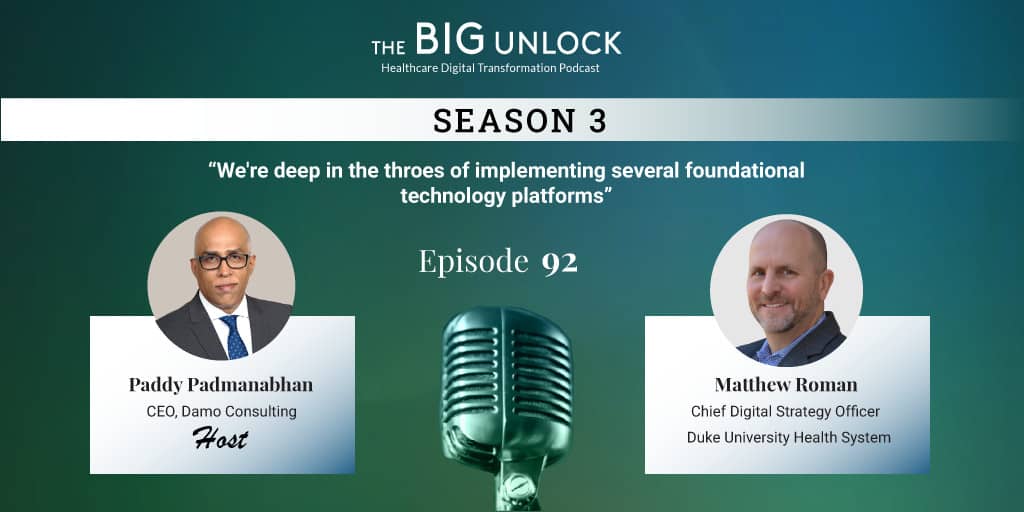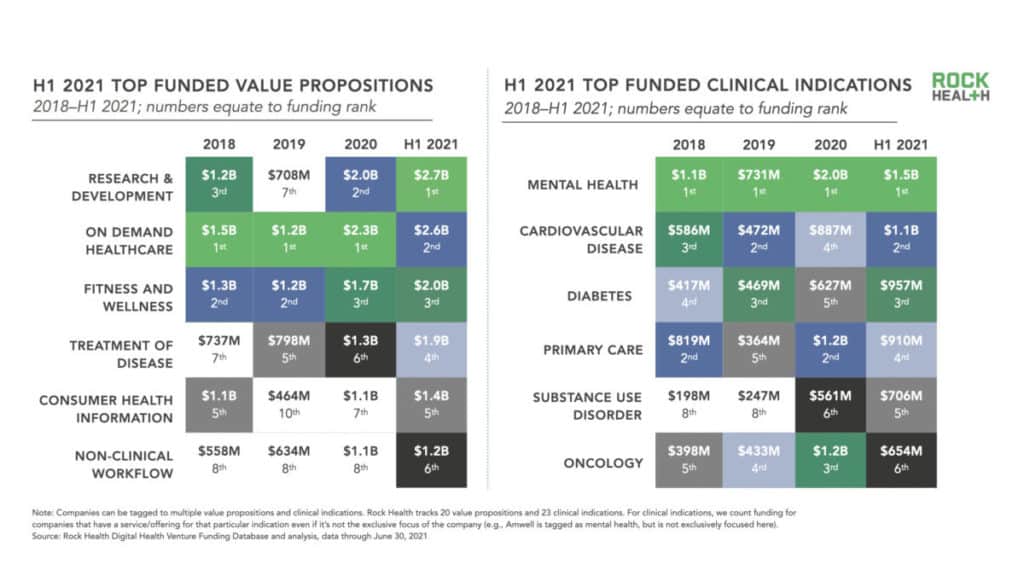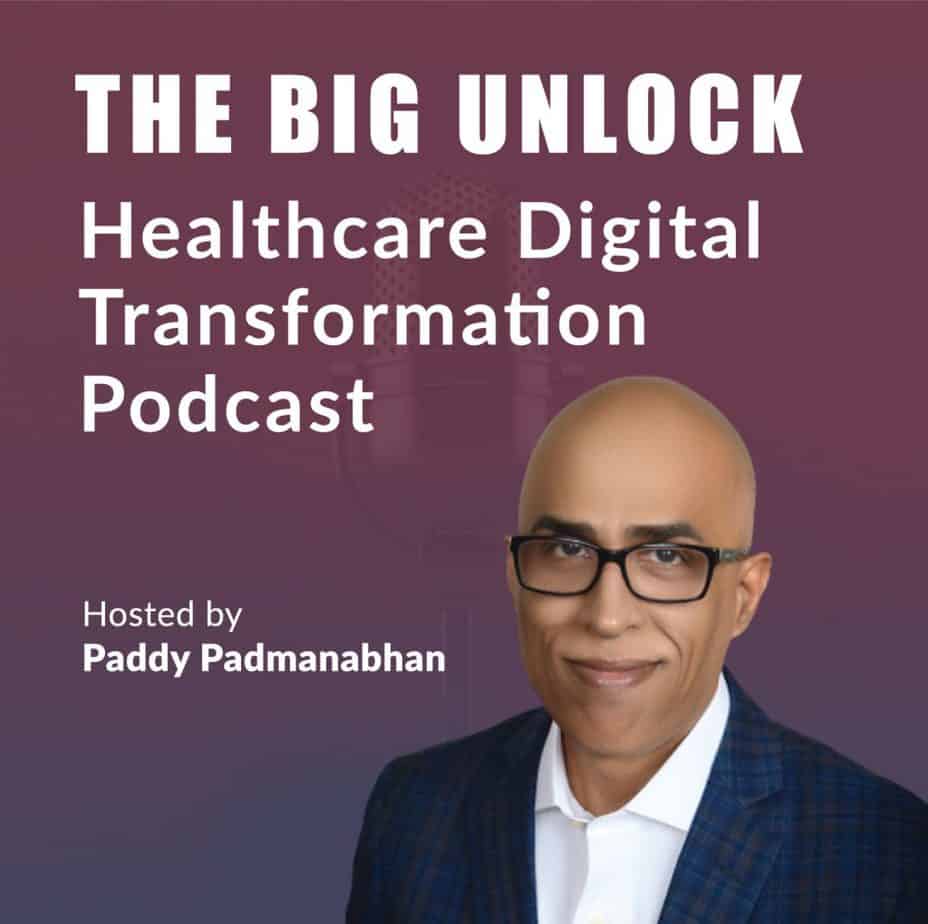
Monday, July 12, 2021
Issue 121

Digital health startups are having a moment. VC funding data published by VC firm Rock Health indicate that nearly $15 billion went into digital health startups for the first half of 2021. The funding levels have already surpassed the numbers for the full year 2020. To put it in perspective, VC funding for digital health for the current year may surpass the total amount of Meaningful Use incentives awarded for EHR implementations in an entire decade. Where are we headed next?
In my article in Healthcare IT News, I discuss the elusive trifecta challenging digital health companies, including the giants of tech such as Amazon. While virtual care models are to stay, the volume of telehealth visits has dropped off significantly from the pandemic peaks in the past few months. No matter. Digital health IPO markets are on a roll, exemplified by Doximity’s eye-popping valuations when it started trading. M&A activity among digital health startups has cranked up (Erin Brodwin of STAT News calls it a “land-grab”), although the indications are that standalone firms are struggling to scale and remain relevant. The worrying news among all the euphoria about digital health is that no one is making money today. There’s a “huge bubble forming,” says Nick Patel, Chief Digital Officer at Prisma Health.
Healthcare organizations, for their part, are making big bets on technology-led transformation, partnering with enterprise-class technology providers such as Amazon, Google, Microsoft, and Salesforce. The pace of transformation activity has accelerated, if anything. The frothy funding levels for digital health startups may be just a bet that the rising tide will lift all boats.
In my latest podcast episode, I interview Matthew Roman, Chief Digital Strategy Officer of Duke University Health System. Take a listen.
Have a great week.
Paddy
Podcast of the Week
In this episode, Matthew Roman discusses how Duke Health is implementing a number of foundational technology platforms for effective patient engagement and care delivery over the next couple of years.
We thank our partners and sponsors for their support in bringing you high-quality content
This Week in Digital Health Markets
We are selectively featuring guest posts in our newsletter from senior leaders in healthcare and technology. Reach out to us if you would like to contribute a blog to one of our upcoming newsletters.
A booming digital health market, and an elusive trifecta
Health system CIOs are reducing their tech footprint and consolidating their IT systems for agility and efficiency. For digital health startups to succeed in this space, they must get three factors right: cost, scale and quality. Healthcare IT News
Digital health companies smash another funding record, raising $14.7B in first half of the year
Blowout VC funding numbers imply the digital transformation of healthcare is well and truly under way. MedCity News
Inside the ‘land grab’ for virtual-first care: how an unprecedented flurry of deals is shaping the new digital health landscape
Teladoc’s blockbuster merger with Livongo in 2020 would’ve been unthinkable just a few years ago. The deal’s timing, in the depths of the pandemic, wasn’t just fortuitous for Livongo and Teladoc shareholders. Rather, it set the stage for a wave of mergers and acquisitions that have ultimately ushered in a new era in virtual care. STAT News
Washington’s antitrust push could limit Amazon, Google’s health care ambitions
What would the current antitrust sentiment among lawmakers mean for big tech? I share my thoughts in this piece. STAT News
Sponsored Content
Telehealth use falls for third straight month, in-person appointments increase
Telehealth was bound to drop off from the pandemic peaks but will still remain higher than before. Remains to be seen where the new equilibrium lies. Modern Healthcare
How to Measure the Value of Virtual Health Care
The pandemic spurred a huge increase in the use of virtual health care. To help policymakers, payers, providers assess the various ways in which virtual care programs could have a positive impact for patients, clinicians, payers, and society going forward, the American Medical Association and Manatt Health developed a framework. HBR
Wellforce to migrate its Epic infrastructure to AWS cloud
The Boston-area health system hopes to have two clinical systems live by September and for the full digital platform, including 300 other apps, to be operational by this time next year – offering big opportunities for scaling AI and machine learning. Healthcare IT News
What if smartphones became personal health assistants?
The latest model of Apple’s iconic iPhone is built around health-monitoring features. An imagine scenario from 2028. The Economist
At Mount Sinai, RPM provides more equal access to cancer care
The prominent provider’s remote patient monitoring program is serving three immediately adjacent neighborhoods in Manhattan that represent a dramatic contrast in populations. Healthcare IT News
How Doximity parlayed its popularity with doctors into a blockbuster IPO
Doximity exploded onto the public markets last month with an IPO that saw share values of the physician social networking startup double in 24 hours. STAT News
Note: Some of the articles linked in this newsletter may be behind paywalls that need a subscription.
Chart of the Week
Source: Rock Health
Damo Consulting Thought Leadership and Research
The Digital Health Solution Selection Process
When health systems look for solution partners to execute their digital priorities, the decision process typically looks like this. Infographic
AI-enabled physicians: rethinking care delivery
While traditionally deeply skeptical of artificial intelligence in clinical settings, in today’s fast-changing care delivery landscape many physicians are thinking more proactively about how how AI can improve quality and patient experience. Blog
AI in healthcare: The tech is here, the users are not
The biggest challenges for AI-enabled care are delivering real-time insights into the clinical workflow and gaining acceptance from caregivers as well as patients. Innovative solutions continue to emerge. Blog
















